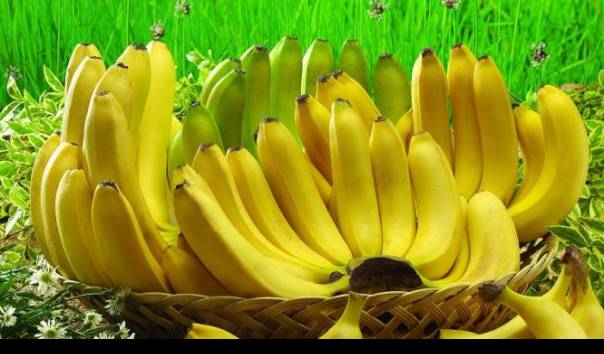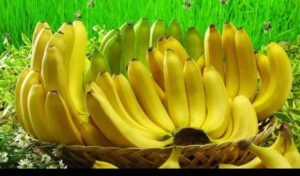

Are you tired of dealing with digestive problems that seem to never go away? Incorporating fiber-rich foods into your diet might just be the solution you’ve been looking for. In this blog post, we’ll explore the importance of fiber in maintaining good digestive health and provide you with a comprehensive guide on how to prevent digestive issues by including more fiber-rich foods in your meals. Let’s dive in and discover the wonders of fiber together!
What is fiber and its role in digestion?
Fiber is a crucial component in our diet that plays a significant role in digestion. It’s not just about keeping things moving smoothly; fiber serves as the backbone for a healthy gut. Essentially, fiber refers to the indigestible part of plant foods that travels through our digestive system relatively intact.
There are two main types of fiber: soluble and insoluble. Soluble fiber dissolves in water and forms a gel-like substance, which helps slow down digestion and can aid in controlling blood sugar levels. On the other hand, insoluble fiber adds bulk to stools, making it easier for waste to pass through the intestines efficiently.
When we consume an adequate amount of fiber-rich foods, such as fruits, vegetables, whole grains, nuts, and seeds, we support our digestive system by promoting regular bowel movements and maintaining overall gut health. So next time you’re planning your meals or snacks, remember that including fiber is key to supporting your digestion from start to finish!
Types of fiber: soluble vs insoluble
Fiber comes in two main types: soluble and insoluble. Soluble fiber dissolves in water to form a gel-like substance, which helps slow down digestion. This type of fiber can be found in food like oats, beans, and fruits. On the other hand, insoluble fiber does not dissolve in water and adds bulk to the stool. It promotes regular bowel movements and prevents constipation. Foods rich in insoluble fiber include whole grains, nuts, and vegetables.
Both types of fiber play crucial roles in maintaining good digestive health. Soluble fiber feeds the beneficial bacteria in the gut, while insoluble fiber supports proper digestion by aiding with waste removal. By incorporating a variety of foods containing both soluble and insoluble fibers into your diet, you can help prevent digestive issues and improve overall gut health.
Benefits of a high-fiber diet for digestive health
Having a high-fiber diet can do wonders for your digestive health. Fiber plays a crucial role in keeping things running smoothly in your gut. It acts like a broom, sweeping through your digestive system and helping to keep everything moving along efficiently. One of the key benefits of incorporating fiber-rich foods into your diet is that it promotes regular bowel movements. This helps prevent constipation and keeps you feeling comfortable and light throughout the day.
Moreover, fiber aids in maintaining a healthy weight by promoting feelings of fullness, which can help reduce overeating. By including fiber-rich foods in your meals, you may find yourself snacking less and making healthier choices overall. Additionally, a high-fiber diet supports the growth of beneficial bacteria in the gut, which contributes to overall gut health and immune function. So not only does fiber benefit digestion directly but also indirectly by supporting your body’s defense mechanisms against illnesses.
List of fiber-rich foods to incorporate into your diet
When it comes to promoting good digestive health, incorporating fiber-rich foods into your diet is key. Not only does fiber help keep things moving smoothly in your digestive system, but it also provides a range of other health benefits. So, what are some delicious and nutritious options to boost your fiber intake? Start your day with a bowl of oatmeal topped with fresh berries for a double dose of fiber. Snack on crunchy almonds or walnuts instead of reaching for processed snacks. Add beans like chickpeas, black beans, or lentils to soups, salads, or stir-fries for an extra fiber punch.
Don’t forget about fruits and vegetables – apples, pears, broccoli, carrots – all excellent sources of fiber that can be easily incorporated into meals. Quinoa and brown rice are great alternatives to refined grains while still being rich in fiber. By including these fiber-rich foods in your daily meals, you’ll not only support your digestion but also nourish your body with essential nutrients for overall well-being.
Recipes and meal ideas to increase fiber intake
Looking to boost your fiber intake with delicious meal ideas? Look no further! Start your day off right with a fiber-rich breakfast by adding chia seeds or ground flaxseeds to your smoothie, oatmeal, or yogurt. For lunch and dinner options, try incorporating legumes like beans, lentils, and chickpeas into soups, salads, or as a main dish. Roasted vegetables such as broccoli, Brussels sprouts, and sweet potatoes are also excellent sources of fiber that can be enjoyed as sides or mixed into pasta dishes.
Snack time doesn’t have to be boring when you have high-fiber options like air-popped popcorn, fresh fruits with the skin on like apples and pears, or crunchy raw veggies with hummus. Don’t forget to stay hydrated throughout the day to aid digestion and keep things moving smoothly. Experimenting in the kitchen with these fiber-rich ingredients will not only benefit your digestive health but also add variety and flavor to your meals!
Potential side effects and precautions when increasing fiber consumption
When increasing your fiber intake, it’s important to be aware of potential side effects that may arise. One common issue is bloating and gas as your digestive system adjusts to the increase in fiber. It’s advisable to gradually introduce fiber-rich foods into your diet to minimize these discomforts. Another precaution to consider is drinking an adequate amount of water when consuming more fiber. Fiber absorbs water in the digestive tract, so staying hydrated can help prevent constipation and promote healthy digestion.
Some individuals may experience stomach cramps or diarrhea when significantly upping their fiber intake. Monitoring how your body responds and adjusting accordingly can help alleviate these symptoms. If you have certain digestive conditions like irritable bowel syndrome (IBS), consult with a healthcare provider before making drastic changes to your fiber consumption. They can provide tailored recommendations based on your specific needs for optimal gut health.
Conclusion
Incorporating fiber-rich foods into your diet is a simple yet effective way to prevent digestive problems and promote overall gut health. By understanding the role of fiber in digestion, recognizing the different types of fiber, and exploring a variety of high-fiber food options, you can easily boost your daily intake. Remember that increasing fiber consumption should be done gradually to allow your body to adjust and minimize any potential side effects like bloating or gas. Be sure to drink plenty of water throughout the day to help fiber move smoothly through your digestive system.
With a diverse range of delicious recipes and meal ideas at your disposal, there are countless ways to enjoy a diet rich in fiber. Whether you’re looking to improve regularity, support weight management, or simply enhance your overall well-being, prioritizing fiber can have significant benefits for your digestive health. So why wait? Start incorporating more fiber-rich foods into your meals today and experience the positive impact on your digestion firsthand!





